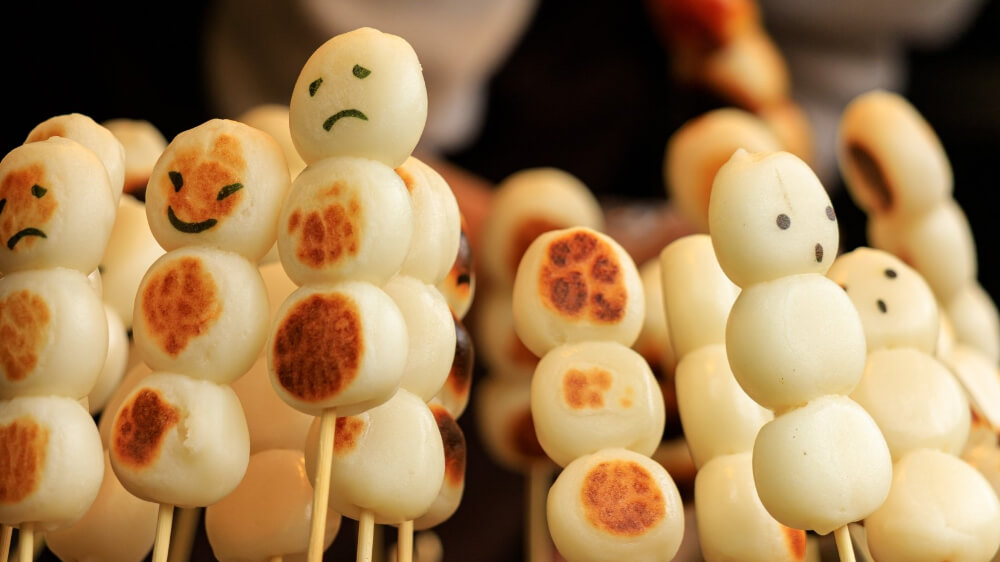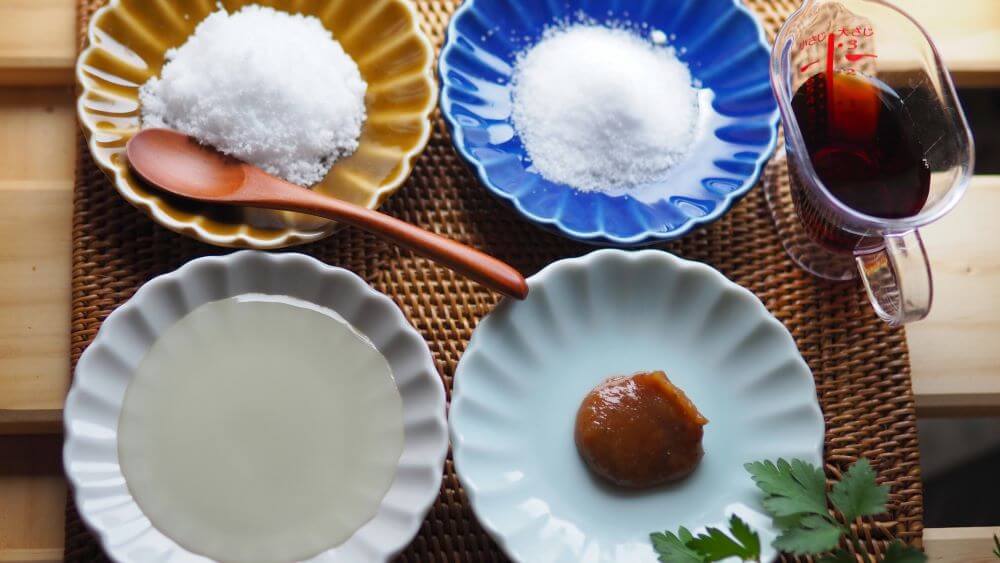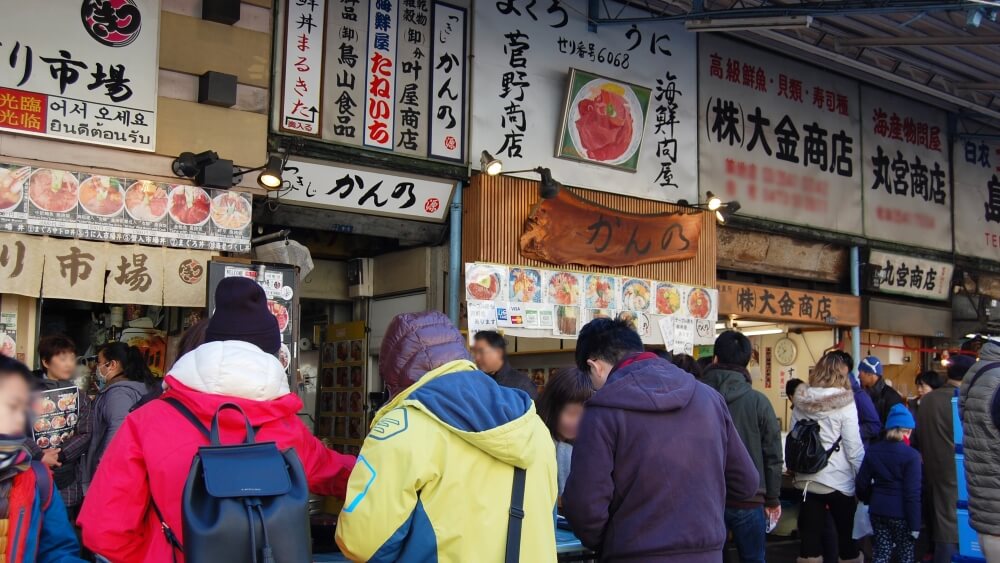団子 [Dango] is a traditional Japanese sweet, loved not only by locals but also by foreign tourists for its charming round shape. Have you noticed that dango, symbolising the fusion of tradition and pop culture, is featured in the name and icon of this website? In this article, we’ll delve into the various types of dango, where to find them, and what makes them so delightful.
What is Dango?
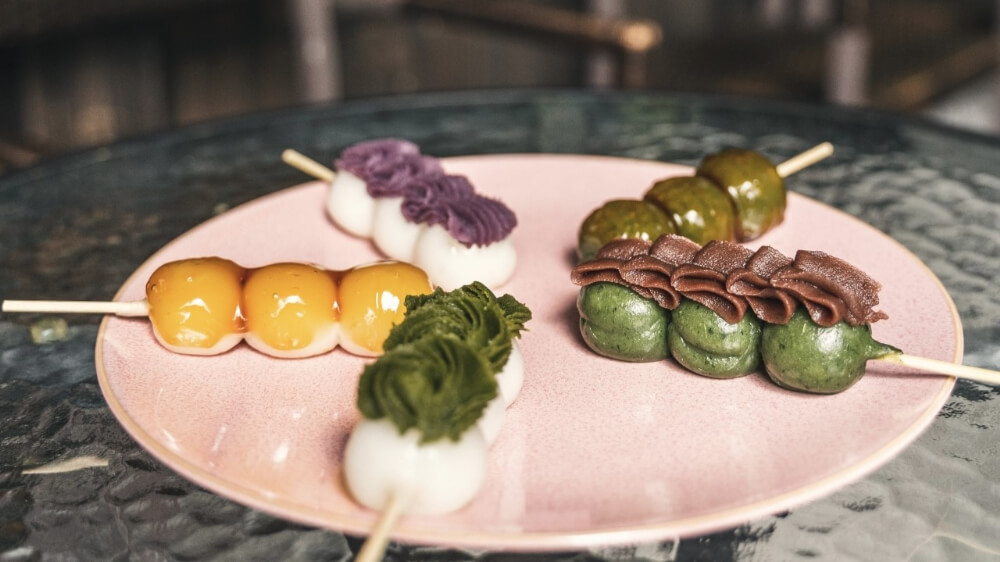
Many people might believe that dango is the same as “mochi“, but they’re actually different treats. Dango is made by kneading rice flour or glutinous rice with water and shaping it into balls, which are then steamed or boiled. On the other hand, mochi is made by steaming glutinous rice and then pounding it into a sticky paste. While mochi is chewy and stretchy, dango has a less stretchy consistency and remains chewy.
The term “dango” is quite broad and can refer to ingredients kneaded into round shapes. For instance, dishes like chicken meatballs, commonly found in hotpot dishes, are also called “dango.” However, in this article, we focus on dango as a traditional Japanese sweets. Dango is often served skewered in groups of three to four. While it has a gentle rice-like flavour, there are various toppings available, ranging from sweet to savoury, adding to its versatility.
Dango is deeply intertwined with Japanese culture and traditional events. For instance, during cherry blossom viewing (hanami), the three-colored dango (San-shoku Dango) is a staple. In autumn, during the moon-viewing festival (tsukimi), white “tsukimi dango” is offered. Dango holds a special role in various seasonal events and festivals throughout the year.
Types of Dango
みたらし団子 [Mitara-shi Dango]
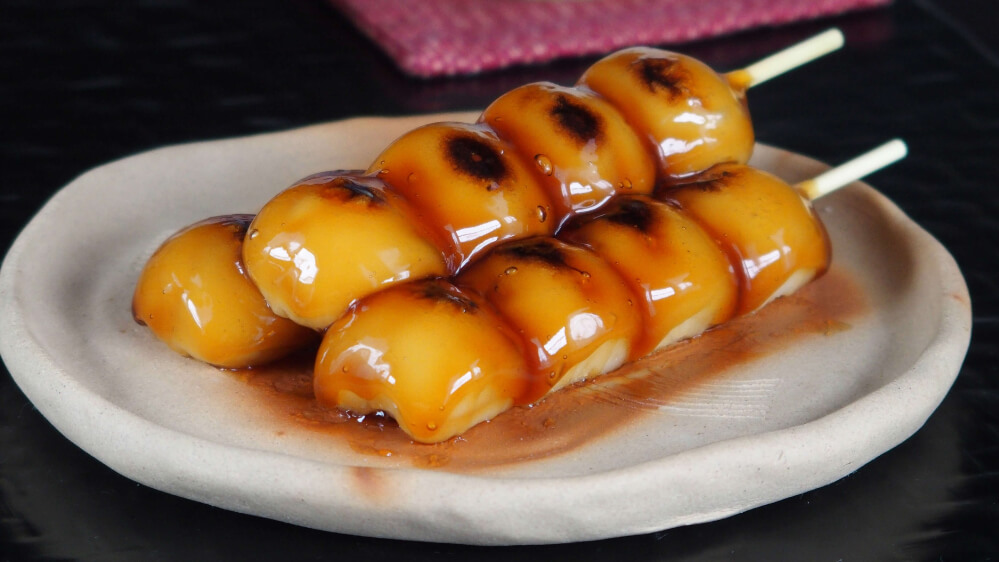
Mitara-shi dango is dango topped with a sweet and savory soy sauce glaze. Originating from Shimogamo Shrine in Kyoto, mitara-shi dango is still widely available throughout Kyoto. The thick sauce made of sugar, soy sauce, and water pairs well with subtle sweetness of dango.
三色団子 [San-shoku Dango]

San-shoku dango, also hanami-dango, is coloured pink, white, and green. Traditionally enjoyed during spring cherry blossom viewing, it remains an essential part of traditional festivals such as Setsubun and Hinamatsuri. Pink represents cherry blossoms, white represents remaining snow, and green represents fresh leaves. Its cute appearance makes it popular among young people as well.
あん団子 [An Dango]
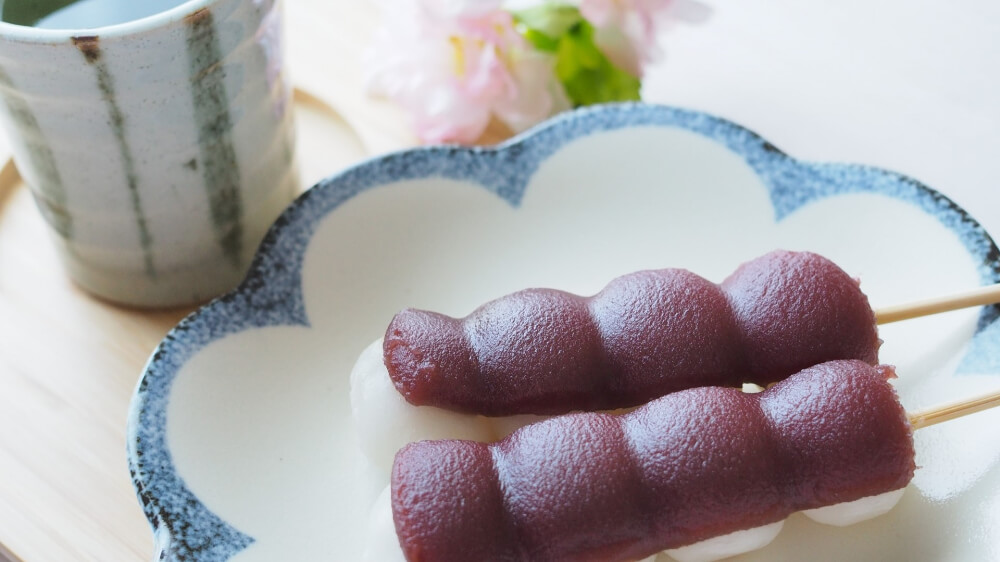
It’s a type of dango topped with sweet bean paste (anko). While enjoyed across Japan, it’s particularly popular in Tokyo’s historical area of Asakusa and Kyoto. Anko comes in different varieties, with “tsubu-an,” which has a unique texture and good flavour by leaving the beans intact, and “koshi-an,” offering a smooth and refined paste, being the most common.
草団子 [Kusa Dango]
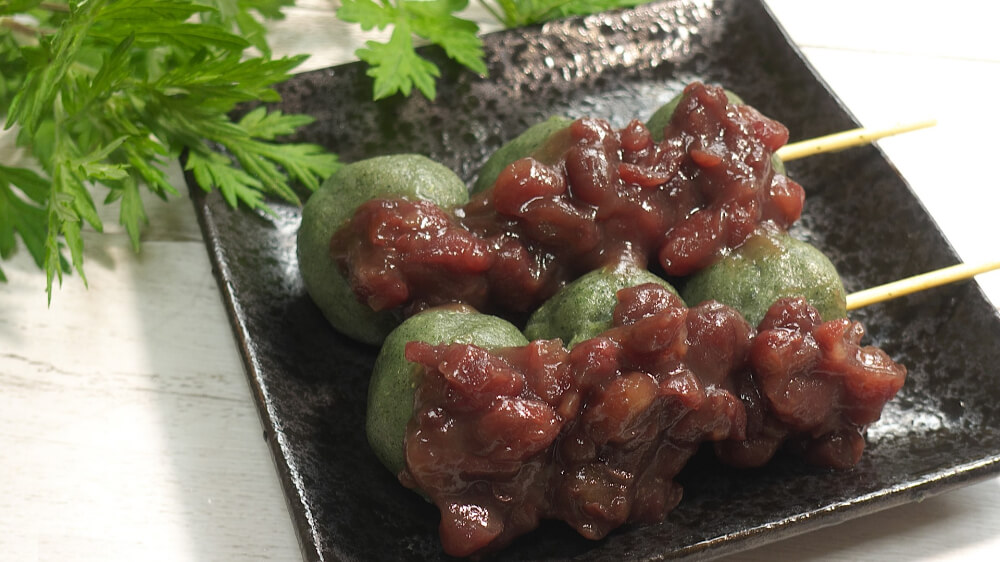
Kusa dango typically includes mugwort leaves, giving it a refreshing aroma, a subtle bitterness, and a muted green colour. Kusa dango is delicious on its own and also pairs well with anko. Niigata‘s traditional “sasa dango,” where mugwort dango is wrapped in bamboo leaves and steamed, is especially popular.
茶団子[Cha Dango]

Cha dango incorporates matcha or hojicha (roasted green tea) into the dango dough. Particularly famous in Kyoto, it’s sometimes served during tea ceremonies, a popular cultural experience among tourists. The bitterness of matcha complements the sweetness of dango, making it a popular choice for adults.
焼き団子 [Yaki Dango]
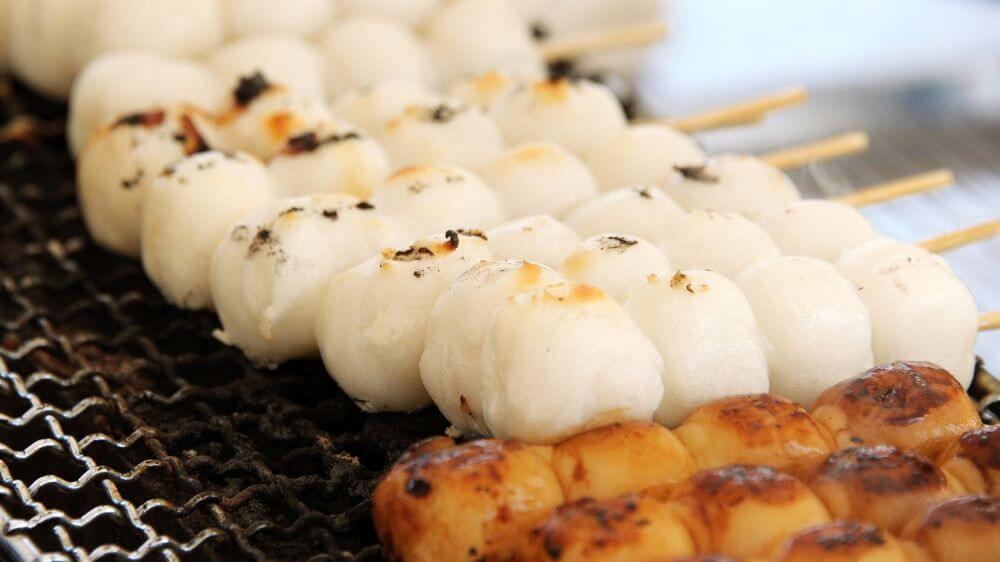
Yaki dango is a simple dango grilled, and applied soy sauce or miso. It’s a savoury snack with a roasting aroma from the charcoal fire. “Gohey-mochi,” which flat dango is grilled and brushed with miso sauce, is renowned in the Chubu region.
Where to Enjoy Dango

Tourist Sites
To fully immerse yourself in the traditional charm of dango, consider visiting tourist spots rich in cultural heritage. Traditional areas often offer unique dango made from local ingredients. For example, in Kyoto, you’ll find numerous shops selling mitara-shi dango and cha dango, while Tokyo’s old town districts are perfect for grabbing a dango.
Japanese Cafes
Many Japanese-style cafes offer desserts featuring dango to enjoy alongside Japanese tea. You can often find modern dango variations like skewered dango with colourful anko toppings or parfaits made with dango, matcha ice cream and anko.
Convenience Stores
The easiest way to enjoy dango is by visiting one of the 50,000 convenience stores nationwide. They stock popular varieties like mitara-shi dango, san-shoku dango, and an dango. With affordable prices, you can enjoy dango anytime, anywhere.
When in Japan, don’t miss out on dango, a quintessential Japanese treat. Each type of dango offers its unique charm and flavour, promising a delightful culinary experience.
